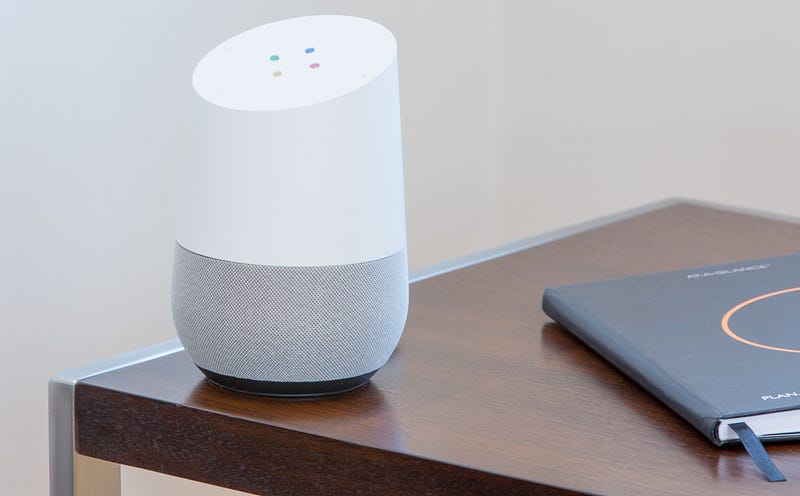Digital business automation, Natural Language Processing, Deep Learning & Internet of Things
Round up, round up! It’s time to tackle more of the data buzzwords that are popping up in meeting rooms everywhere. Say goodbye to blank expressions and scratchy heads, this is your definitive guide to the latest technologies, explained in plain English.

Digital business automation
Digital business automation is the act of taking time-intensive, manual or costly work processes and using digital technology to speed them up. It’s a popular process for modern businesses, particularly ones that have been around for a while. As we know, processes typically change over time, and organic change doesn’t always mean improvement. Digital business automation challenges you to analyse your workflows and look at what can be improved.
Some of the areas include:
- Tasks — summarising business tasks and assessing which ones are repetitive enough to be automated
- Workflow — analysing, reorganising and streamlining processes across a business
- Capture — digitising business documents, capturing and analysing the data that comes from it
Data analytics often goes hand in hand with business automation. It allows you to determine whether a problem was just a blip or whether it falls into a pattern. When a workflow fails, analytics will tell you where and why it failed. Managers overseeing the process can then pinpoint areas for improvement rapidly without the need to manually analyse huge chunks of data first.

Natural language processing
Natural language processing (NLP) is a branch of artificial intelligence that helps computers understand, interpret and manipulate human language.
A common example of NLP is when you type on your mobile and see word suggestions pop up based on what you’re currently typing. That’s natural language processing in action. It’s a little thing that many of us have taken for granted for years, but its application in the business world is far-reaching.
Take a company looking at advertising a new product. They can use google to find common search terms that their users type when they’re looking for similar products. NLP allows for a quick compilation of the data into terms obviously related to their brand and those that they might not expect. Capitalizing on the uncommon terms can give the company the ability to advertise in new ways.
How does it work?
The first step in NLP depends on the application of the system. For voice-based systems like Alexa, special technology translates words into text. Next, the system breaks each word down into categories like nouns, verbs etc. This happens through a series of coded grammar rules that rely on algorithms that incorporate statistical machine learning to help determine the context of what you said. If we’re not talking about speech-to-text NLP, the system just skips this step.
The end result is the machine’s ability to categorize what is said in many different ways. Depending on the underlying focus of the NLP software, the results get used in different ways. For instance, in our SEO example above, an application could use the decoded text to pull in keywords associated with a certain product.

Deep learning
Deep learning is a subset of machine learning in artificial intelligence that takes mountains of unstructured data and attempts to make sense of it. It imitates the workings of the human brain in processing data and creating patterns for use in decision making.
Deep learning vs. machine learning
A common AI technique used for processing big data is machine learning, which we covered in our last buzzword blog. Machine learning is a self-adaptive algorithm that gets increasingly better analysis and patterns with experience or with newly added data. A practical example of this is a company that wants to identify payments fraud within their business. By using machine learning tools, it can process huge levels of transaction data and pick out anomalies in the data, accurately predicting over time what is a legitimate or fraudulent payment.
Deep learning is a means to do this in great depth. Where a standard program could analyse simple variables like overpayments, a deep learning function could analyse multiple data sets in a nonlinear way. The analysis could include time, geographic location, IP address, type of retailer and any other feature that is likely to point to fraudulent activity. Each data layer can be analysed simultaneously and results and patterns aggregated instantly. This allows unstructured data to be analysed and comprehended at scale and speeds impossible for humans or traditional analytical programs.

Internet of things (IoT)
IoT is used to describe the process of connecting everyday devices to the Internet, in order to collect data from them, exchange data between devices or control them from a distance.
These devices can be cars, home automation systems or your everyday toaster.
Caroline Gorski, the head of IoT at Digital Catapult explains “It’s about networks, it’s about devices, and it’s about data,”. IoT allows devices on closed private internet connections to communicate with others and the Internet of Things brings those networks together. It gives the opportunity for devices to communicate not only within close silos but across different networking types and creates a much more connected world.
What does this mean for business?
Experts predict that more than half of new businesses will run on the IoT by 2020. Within industrial applications, sensors on product lines can increase efficiency and cut down on waste. One study estimates 35 per cent of US manufacturers are using data from smart sensors within their set-ups already.
But it’s not all good news. Anyone who’s purchased one of the myriad smart home products — from lightbulbs, switches, to motion sensors — will attest to the fact IoT is in its infancy. Products don’t always easily connect to each other and there are significant security issues that need to be addressed. A report from Samsung says the need to secure every connected device by 2020 is “critical”. The firm’s Open Economy document says “there is a very clear danger that technology is running ahead of the game”. The firm said more than 7.3 billion devices will need to be made secure by their manufacturers before 2020.
So there we have it. Another round of data buzzwords taken head-on. If you’re interested in finding out more about these technologies — or have a data project that you’re starting or struggling with — please do get in touch.